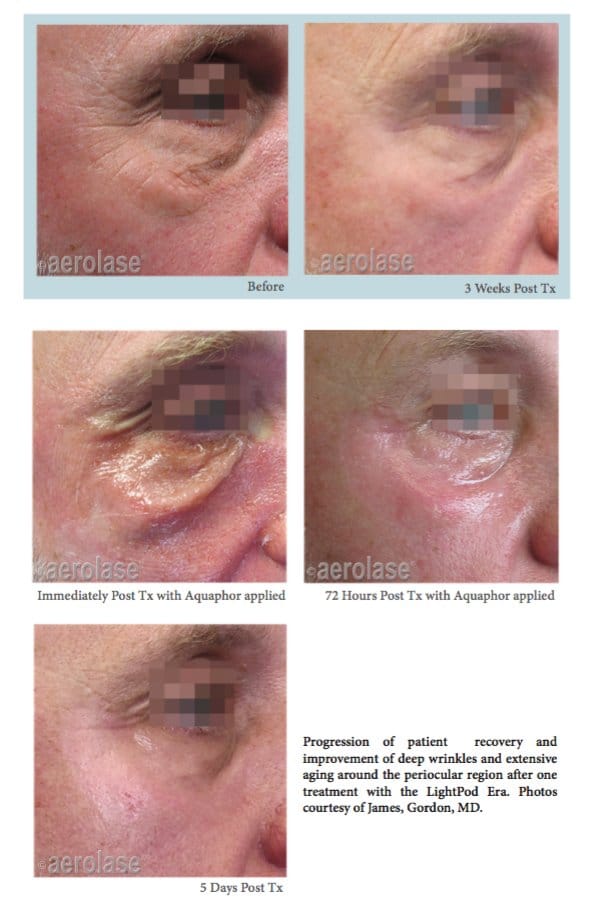MedEsthetics November/December 2017, by Inga Hansen
Aesthetic laser technology has improved in leaps and bounds with shorter pulse durations, higher fluences and more compact designs; which innovations are right for your patient base?
Aesthetic lasers have come a long way since their rather inauspicious beginnings. “The first laser that was ever used on patients was the ruby laser back in 1960,” says Christopher Zachary, MD, professor and chair of dermatology at the University of California, Irvine. “It was a big device, and the parameters we used were entirely inappropriate for any sort of safe treatment, so it caused a lot of burns—this was before anyone knew what the outcome of laser-tissue interaction would be.” It wasn’t until R. Rox Anderson, MD, PhD, and John A. Parrish, MD, introduced the concept of selective photothermolysis in 1983 that the number of aesthetic laser options began to mushroom.
“Suddenly, lasers were being developed that had specific purposes,” says Dr. Zachary. “If you wanted to treat blood vessels, for instance, then you started out with a certain wavelength, a certain pulse duration, a certain energy, and that heralded great times for the development of new devices.”
Flash forward to today, and not only are there dozens of devices from which to choose but clinics that specialize in laser procedures may carry 20 to 30 different machines in their offices, each offering unique features that provide more targeted and effective treatments. In addition, lasers now come in many forms—standalone, multi-wavelength platforms and compact, briefcase-sized machines that can be carried from office to office. Finding the right devices for your practice starts by understanding the latest advances in laser technologies and determining the key concerns you wish to address.
SMALL WONDERS
One of the most recent innovations in laser aesthetics has been the move to create smaller, more portable machines that can be moved from room to room and even practice to practice—and the size of the equipment owes much
to advances in laser technology itself. “When we look at dramatic changes in the laser industry over the years, we have to look at the laser diode,” says Bo Chen, principal scientist at Cynosure. “Driven mainly by innovations in other industries, like the military and communications, laser diodes are getting much, much smaller, much more efficient, and you can generate much higher power from the laser itself. This is where you see devices like the briefcase-sized lasers.”
Compact, portable systems like the original Iridex Diolite and the 532nm KTP laser from NewSurg feature diode lasers that require less cooling and shorter treatment arms, making them more stable with enough energy to effectively treat concerns, such as vascular and pigmented lesions. “We are able to achieve the energy and power output needed to treat lesions with a large spot size and a high repetition rate—so you can fire the laser 10 to 15 times a second, and cover large areas quickly,” says Dave Konstanzer, owner of NewSurg. “The laser runs off 100V vs. 220V, so you can put it in a case, take it on a plane or move it from room to room or office to office.”
A second innovation that has made some laser systems lighter and more portable is air-cooling. “Traditional lasers have a laser emitter, which gets very hot, inside the box and a fiber optic guide system that brings that light out from the emitter to the handpiece,” says Joe Hurley, chief operating officer at Aerolase. “The emitter needs to be cooled, and that is typically done with a water-cooling system, which is why laser systems are so heavy and bulky.”
By using an airstream cooling system and putting the laser emitter in the handpiece rather than in the laser cabinet, Aerolase was able to reduce the size of its devices significantly. “They are still relatively large—maybe 75 pounds to 100 pounds compared to a water-cooled laser system that is about 250 pounds,” says Hurley. “But because there are fewer parts, pieces and subsystems—and that relates to the fiber optic cables and optical components that are in the water-cooled lasers—the systems are far less fragile, so they can be moved more easily.” Like the NewSurg laser, the air-cooled devices can also run off of 100V.
Another major advance has focused on creating higher fluences with shorter and shorter pulse durations—from millisecond to microsecond, nanosecond and now picosecond. “The revolution in the past five to six years has been picosecond lasers,” says Chen. “Instead of nanosecond lasers, developers have continued to push the limits to make the pulses even shorter, which provides a much higher peak power.”
MULTI-TASKING MACHINES
In the past decade, laser manufacturers have also moved toward multifunction laser platforms. Among the benefits of these systems are the ability to treat multiple concerns with one device, as well as the cost savings when compared with purchasing several separate standalone lasers. “These devices use the same power force, optics and other essential elements that drive the lasers, but use them to pulse an Er:YAG laser, a 1,064nm laser and also an IPL, for example,” says Dr. Zachary. “With this platform, you have three or four different wavelengths in one box, and that’s very useful in that you can treat a variety of concerns without buying three or four separate lasers.”
There are some downsides to consider with multifunction platforms, however. “If it breaks, you can’t treat any conditions,” says Dr. Zachary. A multi-purpose platform also limits laser treatments to one treatment room at a time, and combining three different laser or light systems within one unit can lead to some compromises in energy output.
“To make a machine that has three types of laser or light devices and is not the size of three machines, you have to compromise on some aspects of the laser components and cooling system, so it is no longer equivalent to three individual devices,” says Hurley.
The good news is that those concerns tend to be inconsequential when it comes to efficacy. “There are occasionally compromises that you have to make, so it is possible that a single wavelength device could be more powerful than a platform, but honestly I have not found that to be a problem,” notes Dr. Zachary. “With our Sciton device, for instance, that’s the best Er:YAG laser in the world. It has two laser heads, a good IPL and it’s very powerful. I have no problem getting the right energy.”
Not to be confused with multifunction platforms, many standalone lasers do have the ability to emit more than one wavelength. In some cases, wavelengths are combined not to expand the number of offerings but to improve clinical efficacy. “Most of our lasers now are multi-wavelength, and these designs are geared toward better serving the applica- tions,” notes Chen. “For example, the Picosure provides three wavelengths because different wavelengths are need- ed for removing different colors of tattoos.”
In some cases, wavelength accuracy can vary depend- ing on the type of laser. “If it’s a solid state laser, the wavelength is very accurate—if it’s a 1,064nm YAG laser, it’s emitting a 1,064 wavelength,” says Chen. “And most aesthetic industry lasers are solid state, including the 755nm alexandrite laser, 1,064 Nd:YAG; several of the near infrared lasers and quite a few of the 1,320nm and 1,440nm wavelengths.”
Diode lasers, on the other hand, have broader wave- lengths. “If you control the environment of the diode very well—the temperature and the cooling—you can get a wavelength accuracy within a few nanometers,” says Chen. “But if you look at the absorption curve of the specific chro- mophores you want to target, in a lot of cases, a shift of a few nanometers doesn’t affect that absorption a whole lot.”
But wavelength is only one factor in efficacy and safety. “Different lasers, even those of the same wavelength, offer a different range of available treatments based on the pulse duration, optical power and spot size,” says Hurley.
DECIDING FACTORS
Choosing the best devices for your patient base starts by looking at their goals. “First, look at the clinical concerns you want to address and the laser specs required to treat them; then look for the most effective and safest laser for that problem,” says Chen. “Ask the company for clinical ef- ficacy and safety data, and look at how the treatments are performed. Then ask yourself, Does that make sense to me as the treating physician? Are the laser specs what they should be for this purpose?”
While these are the top criteria when investigating a device, business owners are also wise to consider cost. In this area there are two components: upfront costs and ongoing costs. “Ongoing costs include service and repair, consumables (tips, sprays and gels that need to be used), and some devices have a subscription model where the practitioner is charged for each use of the device,” says Hurley. “So, when shopping for a laser, make sure you are comparing apples to apples by looking at the total cost of ownership over a three-year or five-year timeframe.”



